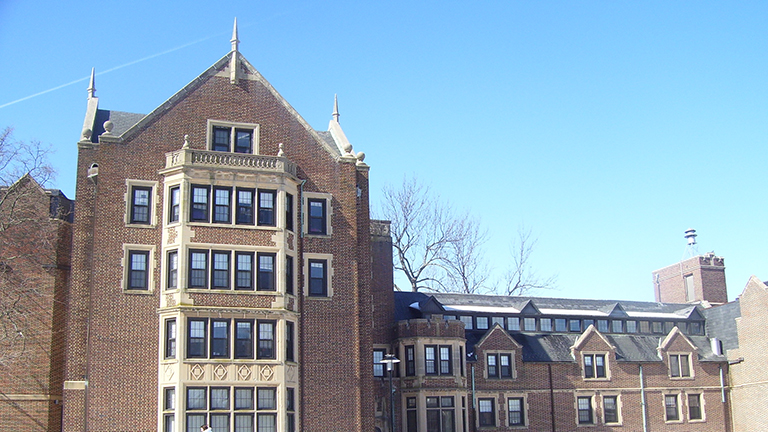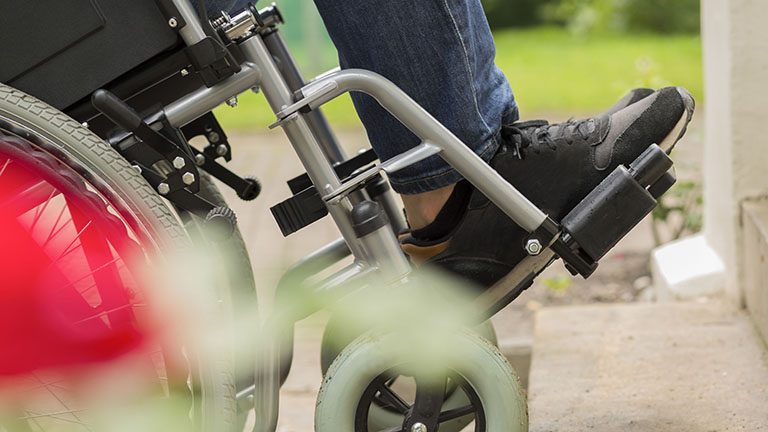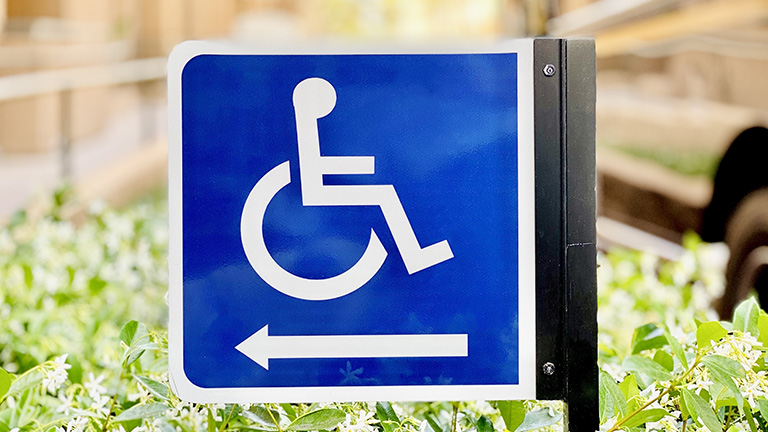The Americans with Disabilities Act (ADA) was implemented in 1990 and today, 27 years later, universal inclusion is finally beginning to take shape. However, lawsuits still take place every year in defense of disability rights, and a significant number of these cases continue to involve colleges and universities. However, a lot of these cases are easily avoidable as they are often brought about by communication failures between college departments, administrators being unaware of the necessity to integrate accessibility features into new construction projects, and an administrative failure to recognize the need for elements within a building to be placed at an accessible height.
Read: 5 Most Accessible Universities in the U.S.
According to the National Association of College and University Attorneys (NACUA) in a document titled, “Surviving an ADA Accessibility Audit: Best Practices for Policy Development and Compliance,” “information gaps” between departments may lead to legal action; “One, [problem] relatively unique to higher education, is the tendency to handle academic ‘accommodations’ and physical accessibility issues through separate campus departments, and not to provide for effective communication between these different offices.” The NACUA goes on to state that the “repercussions” of such communication failures, “can be very unfortunate.” To emphasize how such miscommunication may occur, the NACUA provides the following example:
An admitted student who uses a wheelchair may communicate with Residence Life about needing an accessible dorm room but arrive on campus to learn that she has been assigned to classes in an inaccessible building or at a location with no accessible transportation. That student might reasonably believe that the university had already received notice of her need for accessible classes (and, it must be emphasized, that student was not actually required to request accessible classroom facilities as an ‘accommodation’).
Kuchmas, et al. v. Towson University, et al
One example of such a situation leading to legal action is Kuchmas, et al. v. Towson University, et al:
In 2006, Mark Kuchmas, a then student at Towson University with a neuromuscular condition, filed a lawsuit against Towson University, as well as the design and construction firms of one of the university’s dormitories, as he was unable to utilize the bathroom, shower, or maneuver around the desk in his campus dorm room in his wheelchair. Litigation dragged on for several years before finally reaching a conclusion. According to the Daily Record, the developer whose subsidiaries managed the dorm agreed to pay Kuchmas $50,000 along with $250,000 to cover his legal fees. In addition, the developer agreed to provide Kuchmas with four years of free housing and some tuition compensation. Furthermore, the developer agreed to make accessibility renovations to several of its dormitories under the consultation of an accessibility expert. At the same time, Towson University guaranteed Kuchmas admission, as well as accessible accommodations and transportation to classes. There were several other plaintiffs involved beside Kuchmas who received some amount of financial compensation as well.
Overlooking Accessibility Modifications
An additional concern is the tendency for simple accessibility modifications to be overlooked. According to the NACUA, even experienced and knowledgeable campus administrators may miss simple modifications,
For instance, the fact that wheelchair users need ramps, smooth routes, lifts, and elevators is well noted and addressed on most campuses. But even campus accessibility coordinators may not recognize the need to place common elements within the building at a height that makes them usable from a wheelchair.
Read: 6 Overlooked but Readily Achievable ADA Compliances
The NACUA goes on to suggest that, “…transaction counters, mailboxes, light switches, towel dispensers in toilet rooms or kitchens, coat hooks, coffee services, and many other elements…” should all be within arm’s reach from a wheelchair. Without such modifications, no building may be considered fully accessible by ADA standards, even with adequate use of ramps, elevators, and lifts. In addition, it is a common misconception that these modifications are for the sole benefit of wheelchair users. However, modifications must be made for the benefit of all individuals with disabilities.
Huezo v. Los Angeles Community College District (Los Angeles Pierce College)
For example, though wheelchair lifts and ramps are widely assumed by many to be used by only those in wheelchairs, they are, in fact, utilized by any individuals with difficulty using stairs. Furthermore, this additional population using ramps and lifts require other modifications. For instance, ramps need an appropriate slope and turning points for wheelchair users, while also requiring handrails and handrail extenders for others. Fortunately, most wheelchair lifts accommodate additional disabilities without the need for other modifications. This particular oversight resulted in the case of Huezo v. Los Angeles Community College District (Los Angeles Pierce College).
According to the NACUA document, then Pierce College student Marvin Huezo, filed suit against the school in 2004, alleging failure on part of the college to “provide accessible furniture, parking, restrooms, and paths of travel.” In 2007, courts ruled partial summary judgement in favor of Huezo and the parties agreed to settle with Huezo for approximately $1 million. However, an injunction was filed at the end of 2008 and the courts ordered Pierce Community College to make simple accessibility modifications, such as furniture and workstations, while also employing an accessibility expert to assist in making such modifications. In addition, the school was required to comply with many other accessible renovations, including: parking permits, elevators, fees, signage, and others.
Unaware of Accessibility Requirements
As a further proliferating issue, administrators are commonly unaware of the need to integrate accessibility into new construction projects (i.e., renovation projects triggering ADA requirements, new construction being subject to ADA requirement, etc.). As a result, accessibility problems may actually be created rather than avoided. Therefore, it is important to be aware of some of the ADA provisions that go into effect during construction. For example, during renovation, the ADA requires that up to 20% of the renovation costs be dedicated to accessibility modifications and improvements. Furthermore, although such modifications are emphasized at main paths of travel and entrance ways, modifications may also be necessary in the general areas as well. Such modifications may include simple changes, such as replacing door handles, adding assistive opening devices to doors, or rearranging décor and seating. On the other hand, modifications may include large physical alterations or additions to a structure, such as widening doorways and paths of travel, the installation of additional seating in arenas or event centers, and the installation of wheelchair lifts to facilitate entrance and exit to buildings and interior areas. Furthermore, brand new constructions are required to be fully accessible from the beginning.
Read: How the ADA Affects Renovations
Though architects, engineers, and contractors will presumably design and build a structure that conforms to accessibility, not all of them are completely familiar with code requirements in all areas, so some designs may be approved that do not fully conform to accessibility code. Due to such circumstances, it is important to keep in mind that the ADA is a complaint-driven, civil rights legislation and, as such, is interpreted by legal authorities on a case-by-case basis. Thus, college and university administrators involved in the planning and implementation of any campus construction projects must be aware of the need for integrated accessibility, as well as the methods for achieving such accessibility. In addition, they should remain in constant contact with project designers, and local third-party accessibility consultants. One such example leading to legal action is the Michigan Paralyzed Veterans of America v. University of Michigan.
Michigan Paralyzed Veterans of America v. University of Michigan
In April, 2007, the Michigan Paralyzed Veterans of American (MPVA) filed a lawsuit against the University of Michigan (UM) alleging the discrimination of disabled veterans and others in similar situations through unequal access to the university’s football stadium. The allegation cited that less than 1% of the UM stadiums then 107,000 seats were wheelchair accessible. Furthermore, all accessible seats were located in the same area of the stadium. Represented by attorneys of the U.S. Department of Justice (DOJ), Civil Rights Division, the United States of America entered into the lawsuit in November, 2007, against the University of Michigan. The DOJ further alleged that the football stadium lacked accessible restrooms and convention stands, in addition to parking and accessible routes both around and in the stadium. Moreover, the courts stipulated that due to renovations and updates that had occurred to the stadium over previous years, the UM had been obligated to provide these accessibility modifications to the stadium and failed to do so.
According to the University of Michigan Civil Rights Litigation Clearinghouse, in 2008 both parties consented and the University of Michigan agreed to add 192 accessible and companion seats by the start of that year’s football season. Moreover, U of M agreed to add 379 seats dispersed throughout the stadium, as well as additional accessible section seating by the beginning of the 2010 season. However, as accessible seating wasn’t the only issue raised during the lawsuit, the U of M also agreed to include a separate waiting list for wheelchair accessible season tickets, ticketing policies, bathroom renovations, accessible parking, and transportation from the parking lot, as well as training to any employees or contractors having contact with disabled stadium patrons.
ADA Guidance
Finally, the NACUA provides comprehensive guidance concerning ADA compliance, while both the ADA and United States Access Board websites are terrific resources for accessibility expectations in all situations. However, as noted above, the ADA is a complaint-driven law. Therefore, even total compliance to the most stringent of regulations pertaining to accessibility, universal design, and administrative planning do not exempt an individual or organization from litigation. However, proving compliance in court may benefit any individual or organization accused of non-compliance.
*Disclaimer: We are NOT a body of legal authority. Any material written is NOT the advice or suggestion of authorized legal counsel. Interested or concerned parties of the subject matter are strongly encouraged to contact a lawyer or other accessibility authority.



